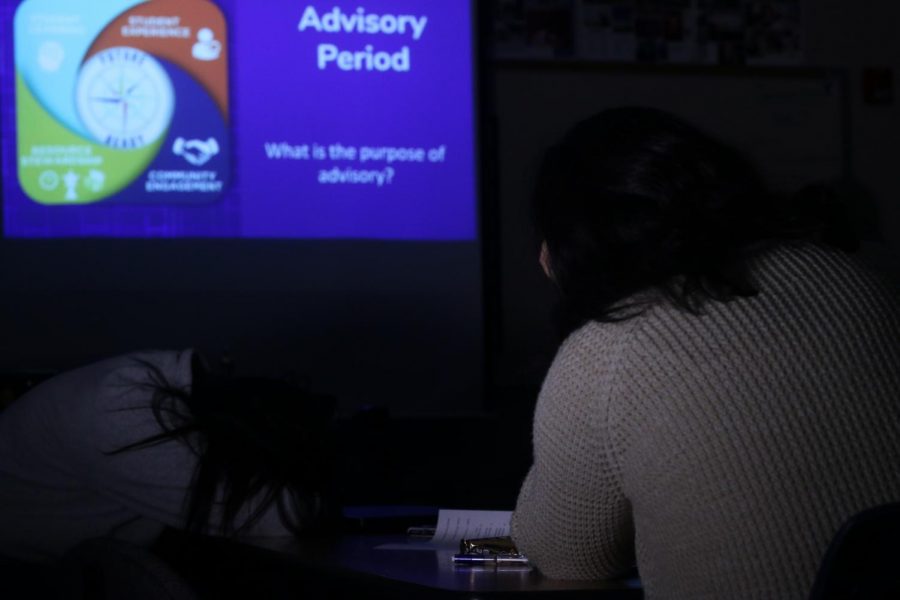Staff Editorial: It is time to re-think advisory
Last school year, advisory was implemented into students’ schedules with the intent of promoting meaningful connections between staff and students as well as providing academic support. After a year of advisory, it is clear it has not achieved its purpose and therefore needs to be re-thought or removed.
Spending 30 required minutes every Monday analyzing character development through heavily structured powerpoints makes students feel coerced to discuss topics they have no interest in. Administration should foster discussion, not force it. The detailed structure of the lessons with specific questions, videos and discussion topics do not encourage the kind of student discussion administration wants to create.
In addition to advisory’s forced nature, its inconsistency is an issue as well. The way students obtain information and start discussions depends on whether or not teachers decide to execute the lesson or not. It’s pretty evident that students are receiving a different learning experience from advisory due to its inconsistency with teacher participation.
Furthermore, advisory was designed to provide a “more personalized learning environment” (as stated in the introductory advisory powerpoint) for students. While the objective was clear, in many classes, students have yet to warm up to their teachers and environments. Every week, advisory lessons rotate from emotional lessons, such as the discussion over suicidal prevention, to announcements such as voting for homecoming court. It seems as though the only goals being met are the ones relating to school activities, leaving the sentimental, impassioned discussions to the side. Because students are not eager or comfortable talking about these emotional topics, advisory can be a waste of time.
Some students believe advisory is a way of alleviating stress by giving them a 30 minute period to take a breather or to have a group to confide in. For some students, advisory has definitely met that goal. Some students believe they have gotten closer with their advisory teachers, but the majority have not. In a poll of 100 random students selected at block lunch, 84 students said advisory hasn’t accomplished its stated purpose. Twenty of those students believe administration should consider changes to make advisory more effective and 66 suggested removing advisory all together.
The solution to this problem may not be simple. Just because advisory has not worked thus far doesn’t mean there can not be changes made to improve it. Reconstructing advisory to where it is held only at the beginning of every month instead of every week may lessen the opposition from students. Administration should try to find ways to make students genuinely interested in topics that are relevant by reducing lesson structure and encouraging teacher flexibility to allow them to become more emotionally connected to students.



